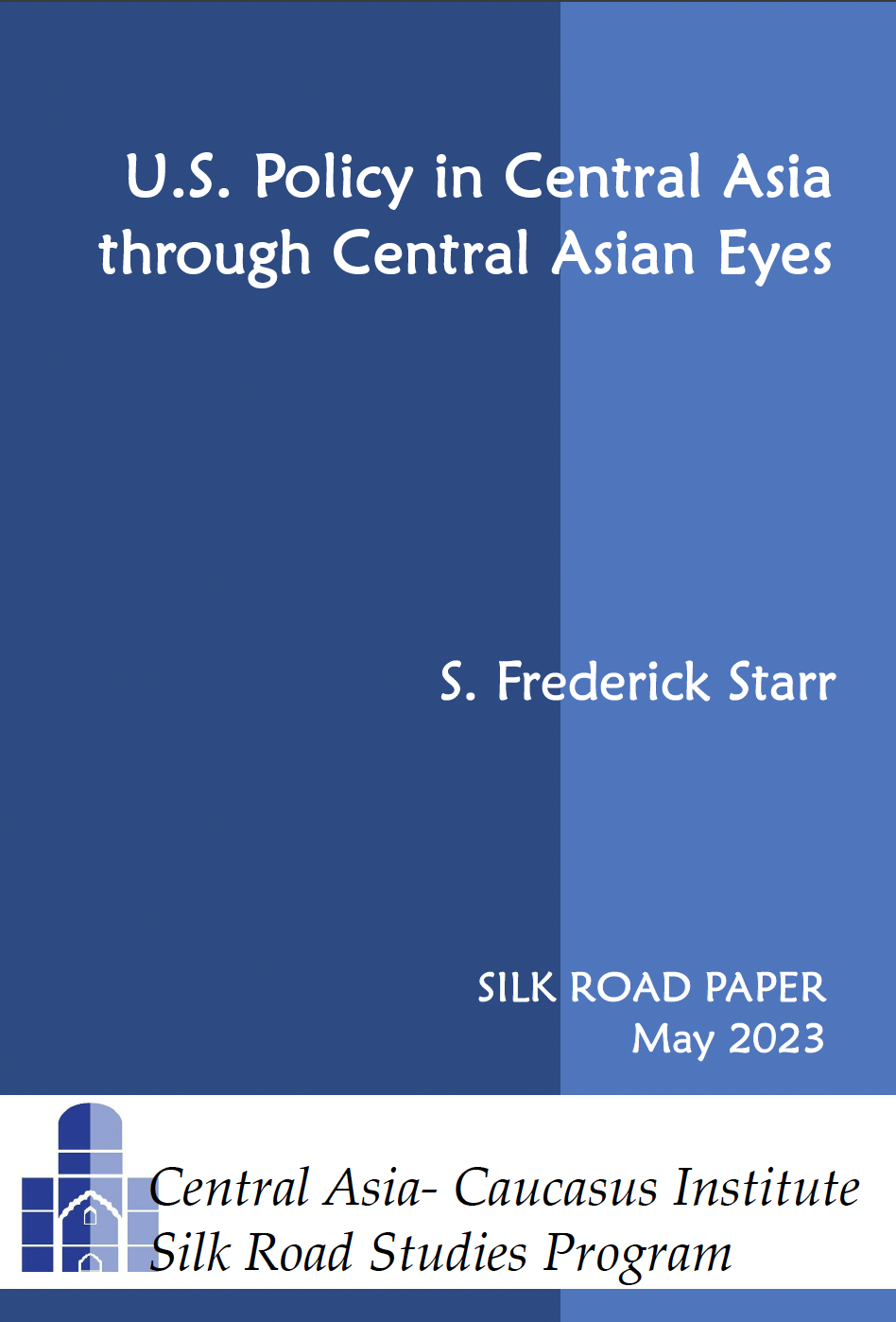BACKGROUND: President Jiang Zemin's visits to Turkmenistan and Tajikistan, his participation in the Shanghai Five summit meeting in Dushanbe, and the hard hitting Dushanbe Declaration to which China signed on demonstrates a new and more expansive Chinese foreign policy in the region. Only two weeks earlier, Iranian President Mohammed Khatami's visited China and was allowed an unprecedented visit to Xinjiang’s Islamic mecca Kashgar - the first foreign Muslim leader privileged to visit volatile Xinjiang. Despite China's repressive campaign against the Uyghurs and Iran's previous foreign policy of supporting oppressed Muslims everywhere, Khatami chose to praise Chinese policies in Xinjiang.
The main thrust of the Dushanbe Declaration was to contain ''separatism, terrorism and extremism'' from spreading into Central Asia and Xinjiang from Afghanistan. The leaders agreed to ''create a joint anti-terrorist center'' in Bishkek, Kyrgyzstan. All leaders including China’s President Jiang Zemin backed Russia's crackdown in Chechnya and condemned the terrorist incidents and bombing campaigns by Islamic militants that have taken place in Central Asia over the past 12 months. China's limited policy thrust over the past few years has been to persuade Kazakhstan and Kyrgyzstan not to give sanctuary or support to Uyghur militants. China is now looking further afield, drumming up similar pledges from Tajikistan and warning the Taliban.
Uyghur militants from Xinjiang, China are increasingly using Afghanistan as a sanctuary, a supply base for training and weapons, and a means to fund their movement back home through the lucrative opium trade. Heroin addiction is now a major social problem in Xinjiang. Although the Taliban are not directly recruiting Uyghurs into their forces, Uyghur militants have enlisted with and get support from the foreign Islamic units fighting for the Taliban. These units include the 800 man Arab brigade led by Osama Bin Laden, units of Pakistani student militants, and the 2,000 man force of the Islamic Movement of Uzbekistan led by Juma Namangani now based in northern Afghanistan.
IMPLICATIONS: China with its long-standing communist policies towards ethnic minorities and religion, is primarily concerned with Uyghur Islamism and separatism, but wants to avoid a confrontation with the wider Muslim world. Significantly Jiang Zemin warned that the use of military force in Afghanistan ''is not a solution'', thereby rebutting Russia's June threat to bomb Taliban camps northern Afghanistan. Jiang Zemin stressed that the United Nations must be given full support to persuade the Afghan factions to form a coalition government. Unlike Russia and the Central Asian leaders, China sees the Taliban as a reality that has to be moderated and contained.
China's apprehensions of the Taliban and their role in supporting Islamic militancy in Central Asia and Xinjiang, has led to problems with Pakistan, its long standing ally in the region which supports the Taliban. For China the moderate government in Tehran is a much more acceptable ally. Although Shia Iran supports the anti-Taliban Northern Alliance with military aid, it has developed diplomatic and trade links with the Taliban. It also has a limited defensive strategy in Afghanistan, does not support Sunni militancy in Central Asia or Xinjiang, and helped mediate an end to the civil war in Tajikistan in 1997 that earned Chinese praise.
A Chinese-Iran partnership is already developing to build strategic oil and gas pipelines in Central Asia, which would both counter United States and Russian pipelines and give the Central Asian states alternative routes to export their energy. Chinese companies are helping build the Neka-Tehran oil pipeline in Iran that will allow Iran to swap oil with Central Asia, while China is interested in helping build a Kazakhstan-Turkmenistan-Iran pipeline to Bandar Abbas on the Gulf as well as a pipeline from Central Asia to China. A new China-Iran axis in Central Asia will add a new twist to the Great Game.
CONCLUSION: President Jiang Zemin met with Russian President Vladamir Putin for the first time in Dushanbe and Putin pledged a strategic partnership with China. Although Russia, China and the United States share a common concern for stability in the region, China's strategy in Central Asia is generally at odds with both Russia and the United States. Russia is committed to an unabashed anti-Islamic crusade in the Caucasus and Central Asia that is rapidly turning both racist and chauvinistic whereas the United States continues to be obsessed with 'Islamic' terrorism and Osama Bin Laden rather than wider strategic objectives.
China is concerned about a repeat invasion this year by Namangani's forces in both Kyrgyzstan and Uzbekistan and has vociferously condemned the support that Namangani’s forces have received from Afghanistan. Last year, Namangani's forces threatened to invade Uzbekistan, but got only as far as Kyrgyzstan. China is worried that an invasion by Namangani could trigger further Uyghur unrest in Xinjiang and lead to a stepped up Russian presence thus increasing United States-NATO activity in the region. In response, the Taliban authorities in an unprecedented statement on July 6, rebuffed China's attitude at the Dushanbe summit.
AUTHOR BIO: Ahmed Rashid is the Afghanistan, Pakistan and Central Asia correspondent for the Far Eastern Economic Review and the Daily Telegraph. He is the author of The Resurgence of Central Asia: Islam or Nationlism?, as well as the recently published Taliban: Militant Islam, Oil and Fundamentalism in Central Asia (Yale, 2000).
Copyright 2000 The Analyst All rights reserved




 Silk Road Paper S. Frederick Starr,
Silk Road Paper S. Frederick Starr,  Book Svante E. Cornell, ed., "
Book Svante E. Cornell, ed., "